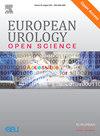个性化前列腺癌诊断:评估基于生物标志物的方法,减少不必要的磁共振成像和活检程序
IF 4.5
3区 医学
Q1 UROLOGY & NEPHROLOGY
引用次数: 0
摘要
背景与目的在过去的十年中,前列腺癌(PCa)检测的努力已经彻底改变了疾病诊断,活检前磁共振成像(MRI)的实施已经得到了广泛的接受。然而,普遍采用活检前MRI及其益处受到可用性和模棱两可的MRI结果的限制。本综述旨在评估现有PCa风险计算器(rc)以及血液和尿液生物标志物作为诊断算法的一部分的最新证据,以提高临床显著性PCa (csPCa)的诊断并减少不必要的MRI程序和活检。我们还将评估前列腺特异性膜抗原(PSMA)正电子发射断层扫描(PET)的潜力,以提高前列腺癌诊断的敏感性和特异性,补充MRI,并在诊断途径中完善活检策略。方法我们使用PubMed/MEDLINE数据库对2014年1月至2024年6月间发表的论文进行综述。结果测量包括非显著性前列腺癌(定义为国际泌尿病理学学会[ISUP]分级第1组)病例的诊断率降低,csPCa(定义为ISUP分级≥2组)病例的诊断率漏诊,以及避免MRI扫描和前列腺活检。对于前列腺特异性抗原(PSA)水平异常的男性,使用RCs或血液或尿液生物标志物进行进一步的风险分层可以减少高达16-51%的MRI扫描,而遗漏1-16%的csPCa病例。在MRI结果不明确或前列腺成像报告和数据系统3病变的情况下,RCs或生物标志物可减少高达72%的活检,而仅遗漏3 - 13%的csPCa病例。PSMA PET与MRI相结合,具有提高csPCa预测的潜力,并可能进一步减少不必要的活检。本研究的一个局限性是,这是一个叙述性的,而不是一个系统的回顾。结论和临床意义src和生物标志物已被证明可以提高MRI在PSA水平升高的男性中检测csPCa的性能和效率。PSMA PET在检测csPCa,补充MRI和改进活检适应症方面显示出希望。对于怀疑前列腺癌的男性,前列腺磁共振成像扫描在预测临床相关癌症方面是有效的,但存在包括可用性和模棱两可的扫描等挑战。通过增加一种或多种临床风险计算器、血液或尿液生物标志物,甚至是新的成像技术,如正电子发射断层扫描,个性化的方法可以进一步提高癌症预测,减少不必要的扫描和活检。本文章由计算机程序翻译,如有差异,请以英文原文为准。
Personalised Prostate Cancer Diagnosis: Evaluating Biomarker-based Approaches to Reduce Unnecessary Magnetic Resonance Imaging and Biopsy Procedures
Background and objective
Efforts made over the last decade for the detection of prostate cancer (PCa) have revolutionised disease diagnostics, and implementation of prebiopsy magnetic resonance imaging (MRI) has received widespread acceptance. However, universal adoption of prebiopsy MRI and the benefits achieved have been limited by availability and equivocal MRI findings. This review aims to evaluate the latest evidence on the role of existing PCa risk calculators (RCs), and blood and urinary biomarkers as part of the diagnostic algorithm to improve the diagnosis of clinically significant PCa (csPCa) and reduce unnecessary MRI procedures and biopsies. We will also evaluate the potential of prostate-specific membrane antigen (PSMA) positron emission tomography (PET) to enhance sensitivity and specificity for PCa diagnosis, complement MRI, and refine biopsy strategies within the diagnostic pathway.
Methods
We performed a narrative review using the PubMed/MEDLINE database, which included papers published between January 2014 and June 2024. The outcome measures included rates of reduced diagnoses of nonsignificant PCa (defined as International Society of Urological Pathology [ISUP] grade group 1) cases, diagnoses of csPCa (defined as ISUP grade group ≥2) cases missed, and MRI scans and prostate biopsies avoided.
Key findings and limitations
In men with abnormal prostate-specific antigen (PSA) levels, further risk stratification using RCs, or blood or urine biomarkers can reduce up to 16–51% MRI scans, while missing 1–16% csPCa cases. In case of equivocal MRI results or Prostate Imaging Reporting and Data System 3 lesions, RCs or biomarkers could reduce up to 72% of biopsies, while missing only 3–13% csPCa cases. PSMA PET has emerging potential to improve csPCa prediction in combination with MRI and may further reduce unnecessary biopsies. A limitation of this study is that this is a narrative but not a systematic review.
Conclusions and clinical implications
RCs and biomarkers have been demonstrated to enhance the performance and efficiency of MRI in detecting csPCa in men with elevated PSA levels. PSMA PET shows promise in detecting csPCa, complementing MRI and refining biopsy indications.
Patient summary
In men with a suspicion of prostate cancer, magnetic resonance imaging prostate scans are effective in predicting clinically relevant cancer, but challenges including availability and equivocal scans exist. A personalised approach by adding one or more of clinical risk calculators, blood or urine biomarkers, or even novel imaging techniques such as positron emission tomography scans may improve cancer prediction further and reduce unnecessary scans and biopsies.
求助全文
通过发布文献求助,成功后即可免费获取论文全文。
去求助
来源期刊

European Urology Open Science
UROLOGY & NEPHROLOGY-
CiteScore
3.40
自引率
4.00%
发文量
1183
审稿时长
49 days
 求助内容:
求助内容: 应助结果提醒方式:
应助结果提醒方式:


